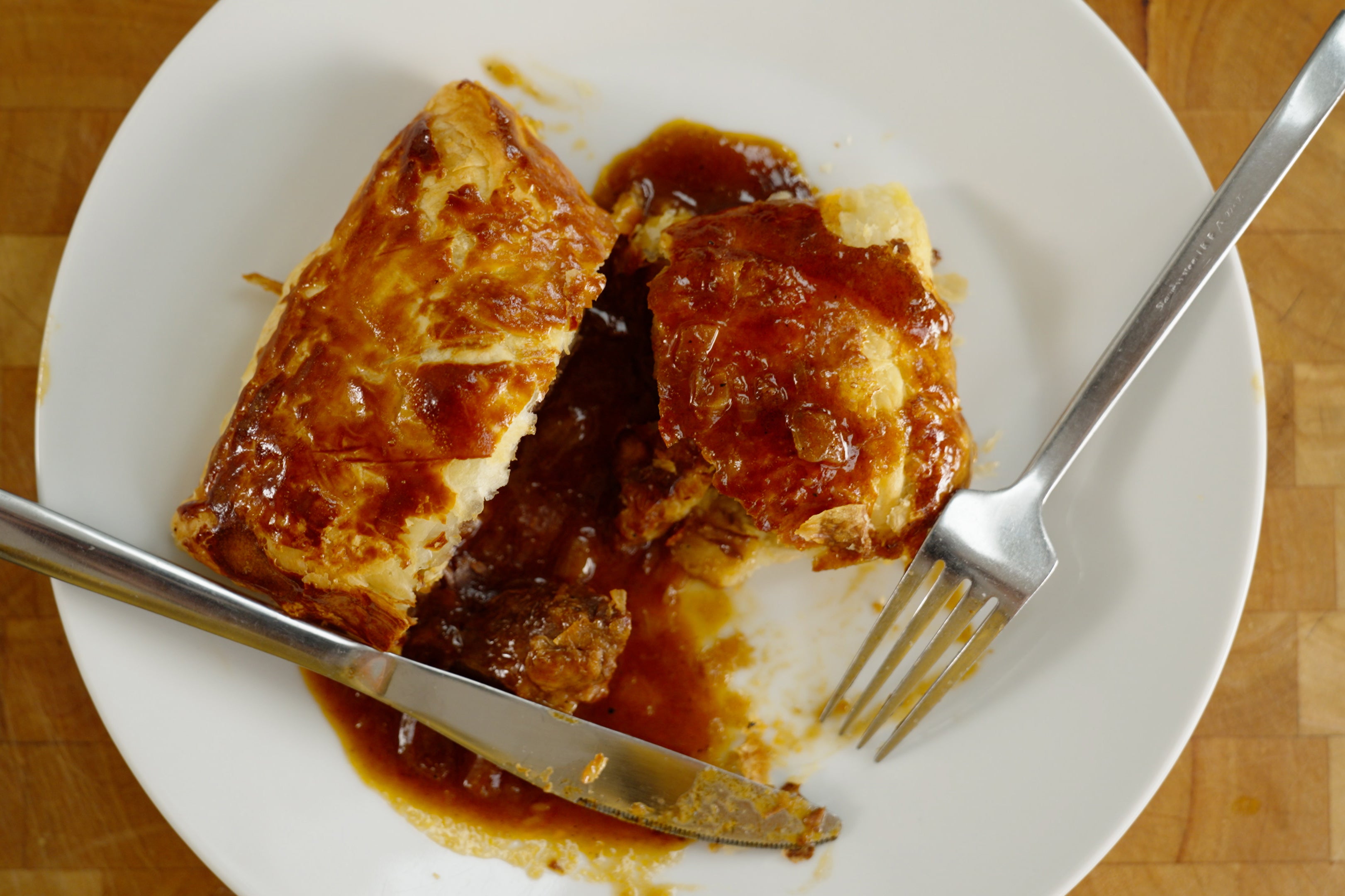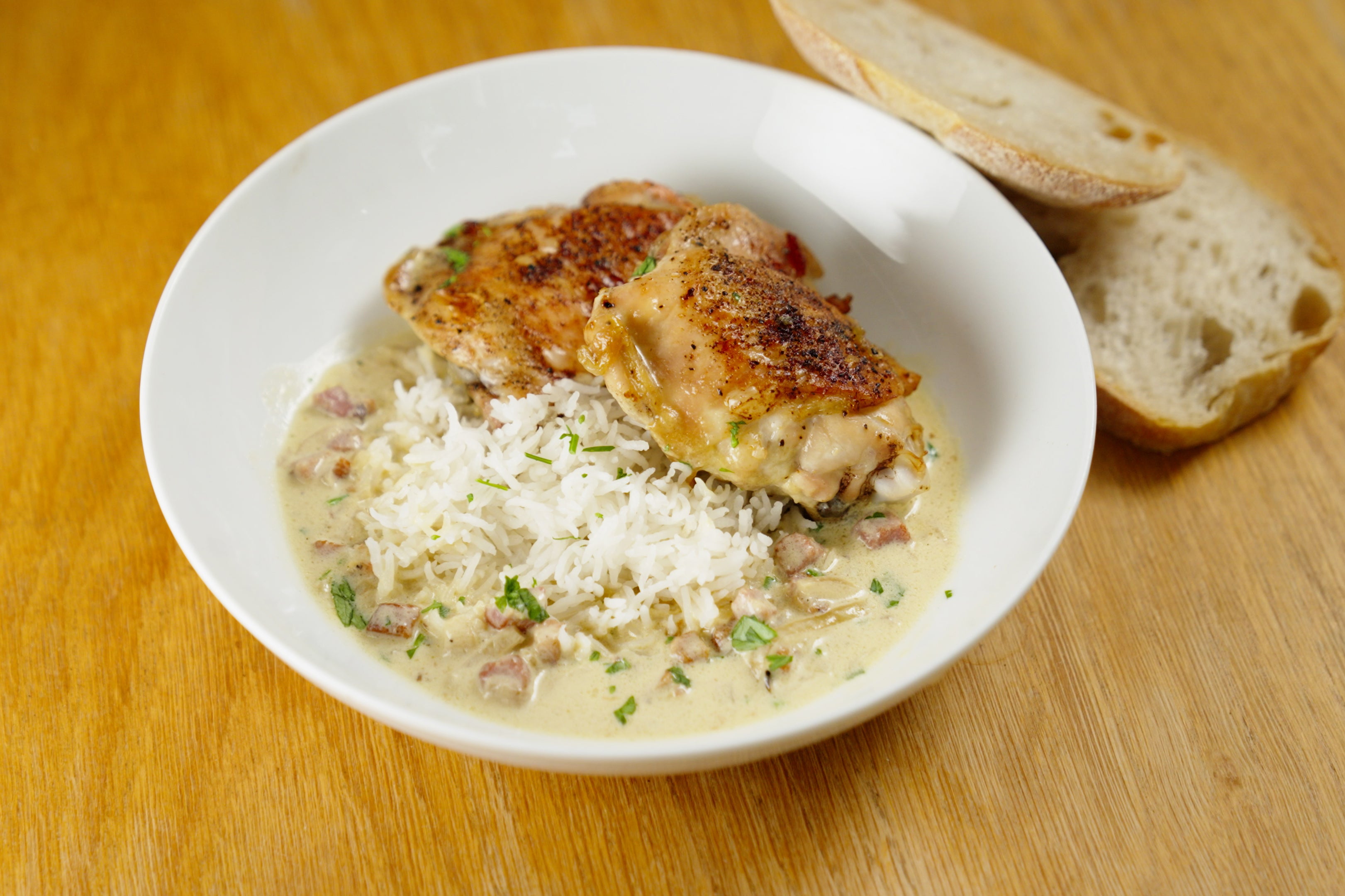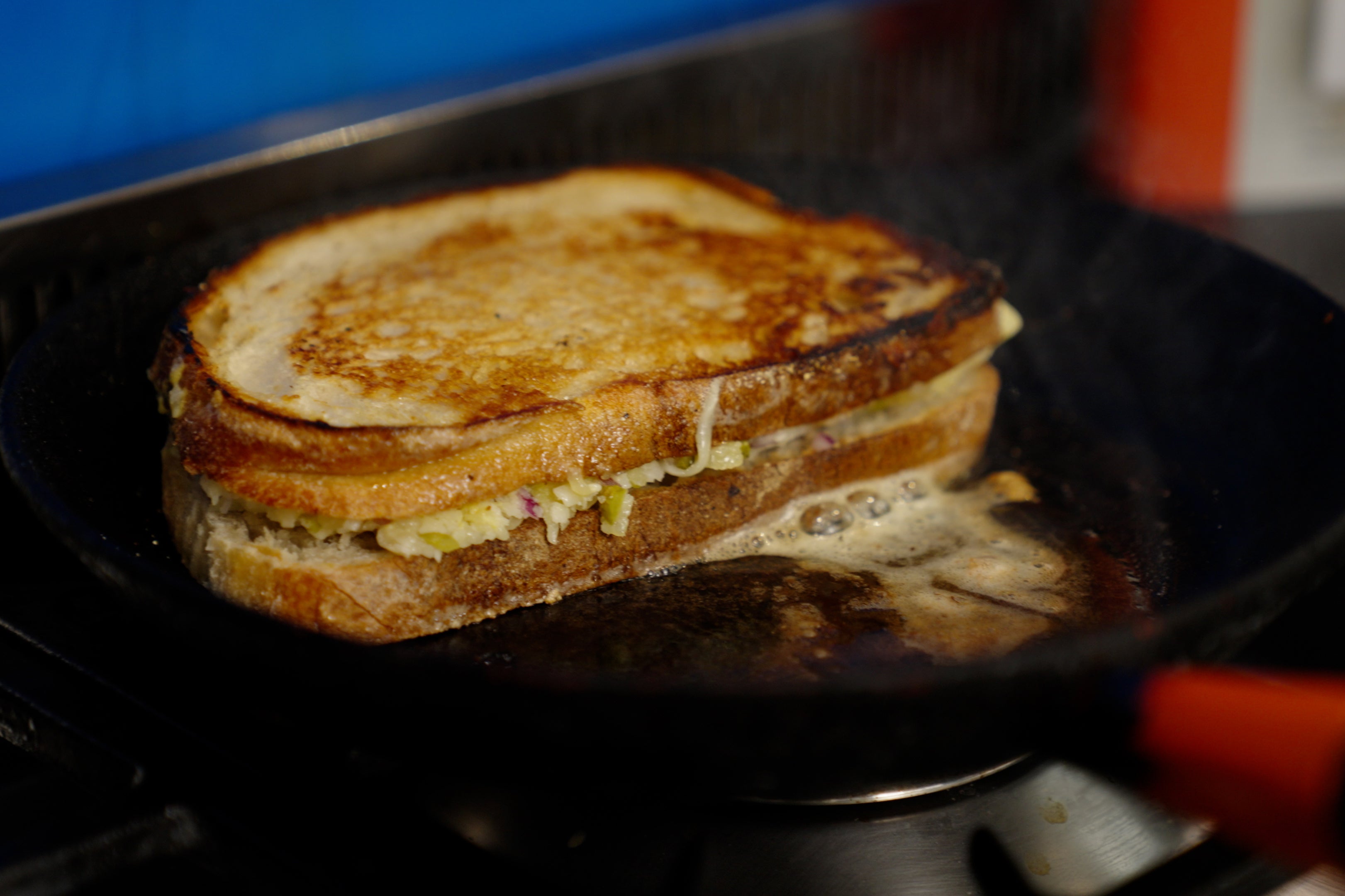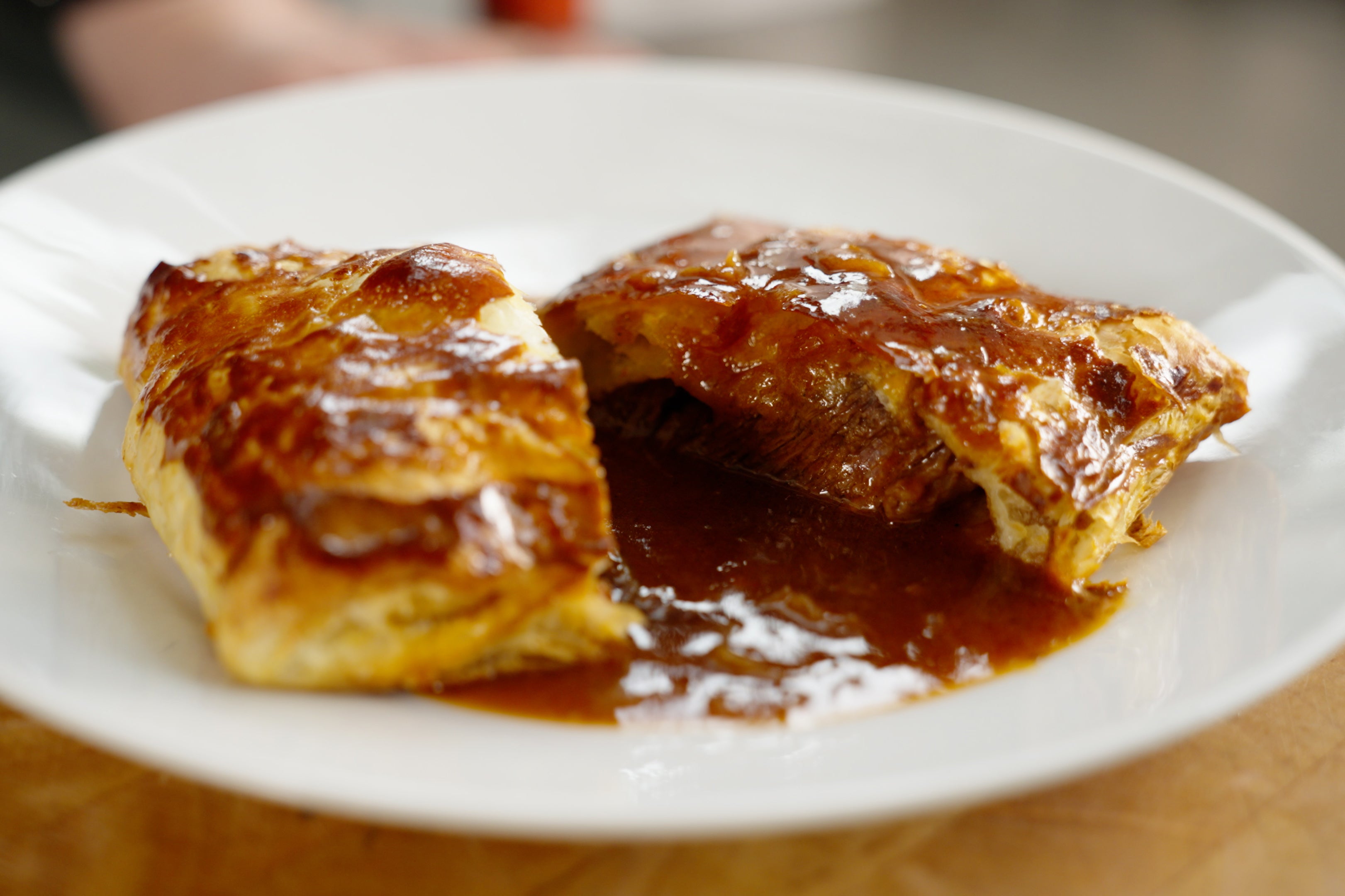Jay Rayner’s best restaurant dishes: After 25 years of dining, the restaurant critic reveals how he cooks at home
Celebrated restaurant critic Jay Rayner has spent a quarter of a century savoruring the best (and worst) of the nation’s eateries. In his debut cookbook, ‘Nights Out at Home’, he invites you to recreate the iconic recipes that have defined his career, blending sharp wit with a deep passion for food that’s both comforting and unforgettable

Your support helps us to tell the story
From reproductive rights to climate change to Big Tech, The Independent is on the ground when the story is developing. Whether it's investigating the financials of Elon Musk's pro-Trump PAC or producing our latest documentary, 'The A Word', which shines a light on the American women fighting for reproductive rights, we know how important it is to parse out the facts from the messaging.
At such a critical moment in US history, we need reporters on the ground. Your donation allows us to keep sending journalists to speak to both sides of the story.
The Independent is trusted by Americans across the entire political spectrum. And unlike many other quality news outlets, we choose not to lock Americans out of our reporting and analysis with paywalls. We believe quality journalism should be available to everyone, paid for by those who can afford it.
Your support makes all the difference.Jay Rayner, a name synonymous with the sharp wit and sharper palate of Britain’s dining scene, has spent a quarter of a century navigating the highs and lows of the nation’s culinary landscape.
As a restaurant critic for The Observer since 1999, Jay’s fork has ventured into everything from Michelin-starred temples of gastronomy to the comforting embrace of greasy spoons and high street bakeries.
Along the way, he’s become a fixture on our screens and radios, a man who’s just as likely to dissect a plate of foie gras on MasterChef as he is to wax lyrical about a sausage roll on The Kitchen Cabinet.
Now, in Nights Out at Home, Jay offers a deeply personal collection of recipes inspired by the dishes that have stayed with him long after the meal was over. These aren’t just recipes; they’re edible love letters to the restaurants, pubs and delis that have shaped his career and, more importantly, his appetite.
Each dish tells a story, not just of the food itself, but of the people who made it, the places it was served and the moments that made it unforgettable.
Take, for instance, the chicken in a mustard sauce, Jay’s tribute to Henry Harris and the soul-soothing rabbit in mustard sauce that graced the menu at Racine. Jay’s version swaps rabbit for chicken thighs, but the essence remains the same: a dish that’s all about big, bold flavours and the simple joy of a perfectly crisped piece of poultry bathed in a luscious, creamy mustard sauce.
Then there’s the ultimate cheese toastie, which could be dismissed as humble comfort food – if it weren’t inspired by the mighty three-cheese toastie from Michel Roux’s Wigmore Pub in London. This isn’t the kind of sandwich you whip up in a hurry. It’s a gooey, gloriously indulgent affair, where Raclette, Cheddar, and Ogleshield melt together in a dance of flavours, with a hint of Dijon mustard and the satisfying crunch of sourdough to seal the deal.

And finally, the steak bake, a British institution, lovingly reimagined by Jay with the same reverence he’d show to a fine dining classic. Inspired by that iconic Greggs pastry, this version is all about elevating the everyday. Tender chunks of beef simmered in a rich, thick gravy, encased in buttery puff pastry that crackles with every bite.
In Nights Out at Home, Jay Rayner isn’t just sharing recipes – he’s sharing memories, insights and the culinary wisdom he’s gathered from decades at the sharp end of a critic’s knife. Whether you’re a seasoned cook or a curious novice, these recipes are an invitation to step into Jay’s world, to taste the dishes that have defined his career, and maybe, just maybe, to see your kitchen in a whole new light.
Chicken in a mustard sauce

Inspired by the rabbit in a mustard sauce served by Henry Harris at Racine.
Ingredients:
1 large onion, sliced into rings
6–8 bone-in, skin-on chicken thighs
200g smoked bacon lardons
2 tbsp olive oil
Sea salt and ground black pepper
A couple of knobs of butter
Half a dozen fat cloves of garlic (optional)
400ml chicken stock from cube
100ml double cream
Dijon mustard
Method:
1. Heat the oven to 220C/425F/gas mark 7. You’re going to roast these chicken thighs hot and fast.
2. Put the sliced onion across the bottom of an oven pan. Place the chicken thighs on top, skin side up. Chuck the lardons over and around them. Dribble on a couple of tablespoons of olive oil, season liberally with salt and pepper and add 2 good knobs of butter. Throw in the cloves of garlic. They aren’t important to the recipe. I just can’t resist the opportunity to roast garlic with chicken thighs. They go soft and mellow and squidgy and can be eaten whole.
3. Roast the chicken thighs in the oven for around 45 minutes, and certainly until the skin is crisp. Baste them every 15 minutes or so. About halfway through the cooking give them 10 minutes skin side down so the backs also crisp up. Then turn back skin side up for another 10 minutes so the skin is really crisp.
4. While the chicken is roasting, warm a serving dish which is big enough and has high enough sides to restrain the sauce.
5. When the thighs are done, take them out of the pan, shaking off any caramelized rings of onion or lardons. Put the chicken in the serving dish to rest. It will not get cold and will benefit hugely from the 15 minutes or so rest it will take to make the sauce.
6. The pan will have lots of fabulous juices in it. Put it on a medium heat, and pour in the stock from cube, scraping up everything from the bottom of the pan. Let it bubble away and reduce a little for 5 minutes.
7. Pour in the double cream and whisk to incorporate into the stock. Let it simmer and thicken further (but don’t let it boil).
8. Whisk in a good tablespoon of Dijon mustard. Taste. (Always taste.) If you think it can take more, add a teaspoon at a time. Dijon mustard is a very good emulsifier and it will bring the whole thing together.
9. Once it has thickened enough to lightly coat the back of a wooden spoon, pour everything in the tray over the chicken thighs.
10. Serve with rice, or crusty bread and a sharp green salad. Pretend you’re a rustic French farmer.
Ultimate cheese toastie

Inspired by the XXL stovetop three cheese and mustard toastie served at chef Michel Roux’s Wigmore Pub, London.
Ingredients:
160g Raclette cheese (substitute with Emmental, Appenzeller, Fontina or Gruyère)
80g Montgomery Cheddar (it does not have to be Montgomery, unless you are keen to match the Wigmore kitchen product for product; use any strong mature Cheddar)
80g Ogleshield cheese (substitute with Taleggio or Fontina)
20g finely chopped red onion
30g finely chopped cornichon
Dijon mustard
4 slices of sourdough bread
Salted butter (the Wigmore uses clarified butter, but I rather like the caramelisation you get from the dairy solids; you could always use vegetable oil)
Method:
1. Grate the cheese, and mix thoroughly in a bowl with the finely chopped red onion and cornichon.
2. Spread a thin layer of Dijon mustard on one internal side of each sandwich.
3. Layer generously with the grated cheese mix, and press down with the second slice of bread. Hilariously, I now appear to be explaining how to use two pieces of bread to make a sandwich.
4. Heat a non-stick or, better still, a well-seasoned cast iron frying pan over a medium heat and add a good knob of the butter. As it melts swirl it around to cover the base of the frying pan. Add the first sandwich and cook over a medium heat for about 4 minutes. Press it down forcefully into the butter with a spatula every now and then. (The Wigmore uses a sandwich press.)
5. After 4 minutes, carefully turn it over on to the other side. The cheese will have started to melt, bonding it all together. Add another knob of butter, and lift the toastie it has now become so you can swirl the newly molten butter in underneath. Cook for another 4 minutes, again pressing it down occasionally.
6. Put on a plate or board and leave to cool for a couple of minutes, as you start to cook the second. At the Wigmore they cut it into 4cm wide slices, which does make it easier to eat.
The steak bake

Inspired by the iconic item sold by Greggs, the high street bakers.
Makes: 6 steak bakes
Ingredients:
3 heaped tbsp plain flour, for dusting
A good tsp garlic powder
Table salt and black pepper
1kg braising steak or chuck, cut into 4cm cubes and trimmed of excess fat and connective tissue, so probably 1.2kg before the trim (you can also remove unwanted fat, etc. after it’s been braised and chilled)
Vegetable oil, for frying
1 large onion, chopped
500ml beef stock
350ml veal jus
1 tbsp tomato purée
1 tsp Worcestershire sauce
2 x 320g packets of shop-bought puff pastry
1 beaten egg for egg wash
Method:
1. Put the flour and garlic powder into a bowl. Add a generous amount of table salt and use your hand to stir the mix together. Put the cubes of beef into the seasoned flour and mix around until they are all well coated.
2. Heat a couple of tablespoons of vegetable oil in your pressure cooker or saucepan and brown the beef on all sides in batches, taking each batch out and putting it into a bowl to make space for the next. The flour will start to form a crust on the bottom. Watch the heat and make sure the flour crust doesn’t burn. You may need to add a little more oil for each batch of beef, as it does get absorbed by the flour.
3. When all the beef has been browned, turn the heat down, add the chopped onion and cook for a few minutes until soft. Again, you may need to keep it moving to stop the crusted flour from burning.
4. When the onion is soft, add the stock and the jus and as it heats up, use your wooden spoon to scrape up any of the crust on the bottom of the pan. When it gets to a simmer, add the tomato puree and Worcestershire sauce and stir it all in. Finally put the beef back in, with any juices that have been released. Season with a little salt and cracked black pepper. If you’re not using real beef stock and veal jus, use 850ml of beef stock from two cubes.
5. If you’re not using a pressure cooker, you will now need to braise this in a pan, half covered on a very low heat. Give it a stir every now and then to make sure it’s not scorching on the bottom. It should take about 2 hours for the meat to become tender, but it could need up to 3. Check by taking out a piece of beef and seeing if it will come apart easily when you pull at it with two forks.
6. If you are using a pressure cooker, put the lid on, bring to pressure and cook for 25 minutes. At the end of that I use a fast pressure release by pressing on the valve with a folded tea towel so as not to burn my hand. Steam burns are nasty.
7. Use a slotted spoon to transfer all the beef to a dish which can take it in one layer. Allow it to cool for 10 or 15 minutes. Meanwhile reduce the gravy by about a third if using the real stocks and by half if using the stock from cube. If you’re using the latter and it isn’t thickening properly, take a couple of tablespoons of the gravy and put it into a mug with a teaspoon of flour. Mix it to make a slurry, then reintroduce it to the gravy and continue to reduce. If you have cooked your beef on the hob, you may find that you don’t need to reduce the stock very much at all.
8. When the gravy is reduced, pour it over the meat. Allow that to cool for a further 10 minutes and then put it into the fridge for at least 3 hours. You want it all very cold and for the gravy to have turned into a jelly.
9. Two hours before you want to eat, make the steak bakes. The Greggs version measures 10cm × 12cm, so you need 6 sheets of pastry measuring roughly 10cm × 25cm. (The product I use, Jus-Rol, measures 23cm × 35cm, which allows for 3 per sheet of roughly these dimensions.) Spread them out across the greaseproof paper that the puff pastry comes on. Mark across the middle of each sheet, so you can see where the bottom half is.
10. Your beef should now be in a jellified gravy. If you want to take off any lumps of fat and connective tissue do so now. They will come away easily. Use a spoon (or your fingers; I’m not watching) to take pieces of the meat out with just a little of the jelly attached and arrange in a tight square in the centre of the bottom half of the pastry, leaving a 1cm border all the way around. You want it to be a generous filling. Egg-wash all the way around the pastry edges, then fold the top half of the pastry sheet over the filling and press the pastry edges of both halves together. Remember this is a home-made steak bake, not a mass-produced version. It will end up looking a bit rough and ready.
11. Go around the edges with the tines of a fork, to make little indentations that will help seal them, just like on a Greggs Steak Bake. Then lightly score the bulging surface on the diagonal from one corner to the other, making sure not to cut through the pastry. Generously egg wash the top of the steak bake. Immediately put back into the fridge to chill again for 90 minutes. Reserve what’s left of the egg-wash.
12. If making 6 small ones feels like a total faff, you can make 2 giant ones, using the whole 23cm × 35cm sheet. Follow the same instructions as above, only this time fill half the sheet with beef, but still leave the 1cm wide border. The key to either version is not to allow too much gravy in with the beef or it will leak. There will be enough with the jelly that’s attached.
13. An hour before you want to eat, heat the oven to 220C/425F/gas mark 7. Lightly oil two baking trays which are big enough to take the 6 steak bakes. Put them into the oven for 15 minutes until smokingly hot. Take the steak bakes out of the fridge. Egg-wash them again. Take the first oven tray out and put the steak bakes on, leaving the other one in there so it doesn’t get a chance to cool down. Once the first is in the oven, take out the second and repeat. Using very hot oven trays guarantees the bakes will have crisp rather than soggy bottoms. If you’ve made the giant steak bake it will be a little hard to move it across from the fridge, but it is doable, because you’ve chilled it and it has firmed up.
14. Bake for 25 to 30 minutes, until golden and crisp. From about 20 minutes in you may have to swap the oven trays around so they get equal amounts of time at the top. Despite your best efforts they may still leak a little gravy. Don’t worry. The Greggs ones do that too.
15. While they are baking, heat up the remaining gravy and any leftover beef in a saucepan.
16. Serve the steak bakes with extra gravy on the side.
Recipes from ‘Nights Out at Home’ by Jay Rayner (Fig Tree, £22, available 5 september)
Join our commenting forum
Join thought-provoking conversations, follow other Independent readers and see their replies
Comments